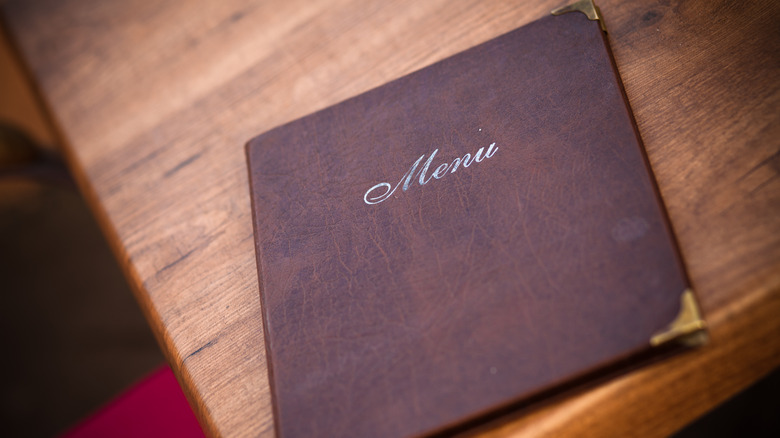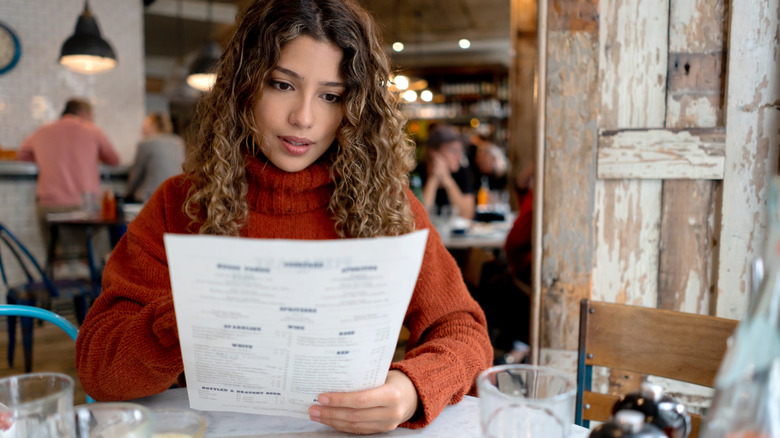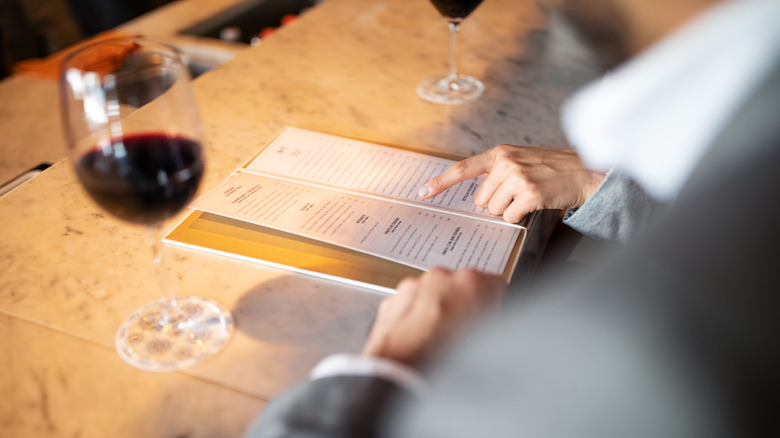What 'Banner Blindness' Means When It Comes To Restaurant Menus
We've all had that moment where we are staring up at a menu behind the counter, unsure exactly what we want, and most likely holding up the line. As it turns out, it might not be your fault for having a hard time deciphering the menu: The design may actually be causing you "banner blindness."
Banner blindness is a type of selective attention, specifically concerning people's abilities to avoid or ignore certain media that may look like an ad. This usually happens when a certain chunk of information is highlighted by a banner or separate color block. While this tool is great while searching the internet or trying to watch a video while unwanted pop-up ads keep appearing on your screen, it actually works against us in restaurants.
While the restaurant may want to emphasize a specific special or point out an important detail about the menu, it can often go unnoticed if it is cloaked in a banner-like design. Sometimes, certain items enclosed in banners are so difficult to notice that they may as well be a part of the restaurant's secret menu.
How restaurants (and customers) can avoid banner blindness
Have you ever found yourself looking over at the table next to you at a dish that looks and smells incredible, only to ask yourself, "Where is that on the menu?" It likely wasn't an oversight on your part; the dish was probably just cloaked in a banner that you may have skimmed over while scanning the eatery's options.
USC professor and expert in applied psychology, Dr. Jason Buhle told Delish that menu blindness is a common mistake that restaurants should avoid if they want customers to notice what lies inside the bannered design. Buhle said, "In usability testing ... users [frequently] skip over any content in banners. When asked why, they say they assume it was an advertisement that would not contain any information relevant to them." While it may seem logical for restaurants to emphasize their unique offerings with bold text surrounded by a banner that stands out from the rest of the menu, it actually does the opposite for many consumers who have been conditioned in the digital age to avoid obvious attempts at grabbing their attention. To prevent falling victim to banner blindness, restaurants and other eateries should probably take note of customers' selective attention and instead pivot to a static menu. This type of menu uses categories to create a concise, streamlined menu, avoiding the use of distracting designs such as banners and multiple fonts that can overwhelm and confuse customers.
These tricky menu designs can fool the customer into spending more
With all the menu rules you are supposed to follow at restaurants, you might expect these eateries to follow a ruleset of their own. However, it is not uncommon for a restaurant menu to subtly manipulate customers into eyeing the more expensive specials over the cheaper items. In addition to banner blindness, this should also be a red flag — it might be a sign the restaurant is using psychology to get customers to spend more money.
Dr. Jason Buhle told Delish, "... A menu is a form of advertising." These advertisements are designed not only to help the customer choose a dish but to subtly persuade them into thinking the more expensive items are more desirable. They do this by placing their most expensive items at the top of the menu, where many customers assume specials and popular dishes reside.
Restaurants are well aware of what sneaky tactics are most effective when scanning menu prices. High-end eateries often do not even list the prices of certain foods, which allows them to fluctuate based on the time of day and season. Customers may also not be willing to directly ask staff how much a certain item is and end up spending more than intended on their meal. Things like kitschy names, illustrations, and even removing dollar signs from menus are all tricks meticulously utilized in the hopes of persuading customers to indulge.


